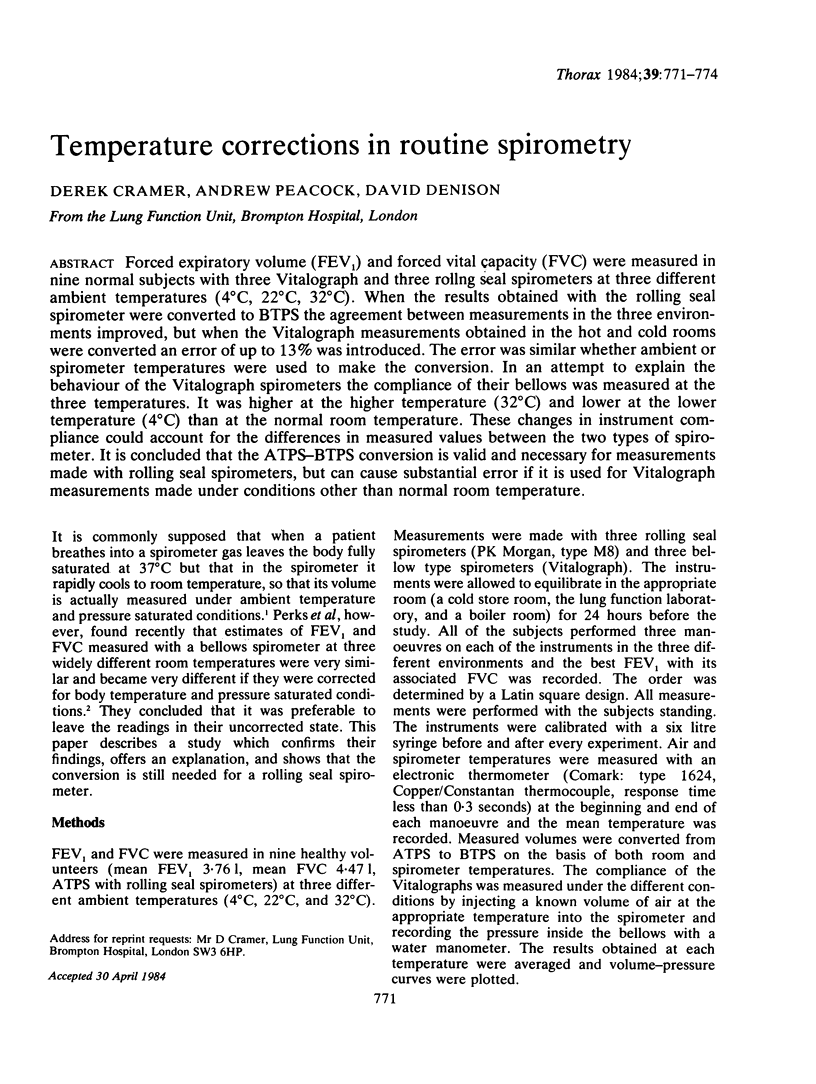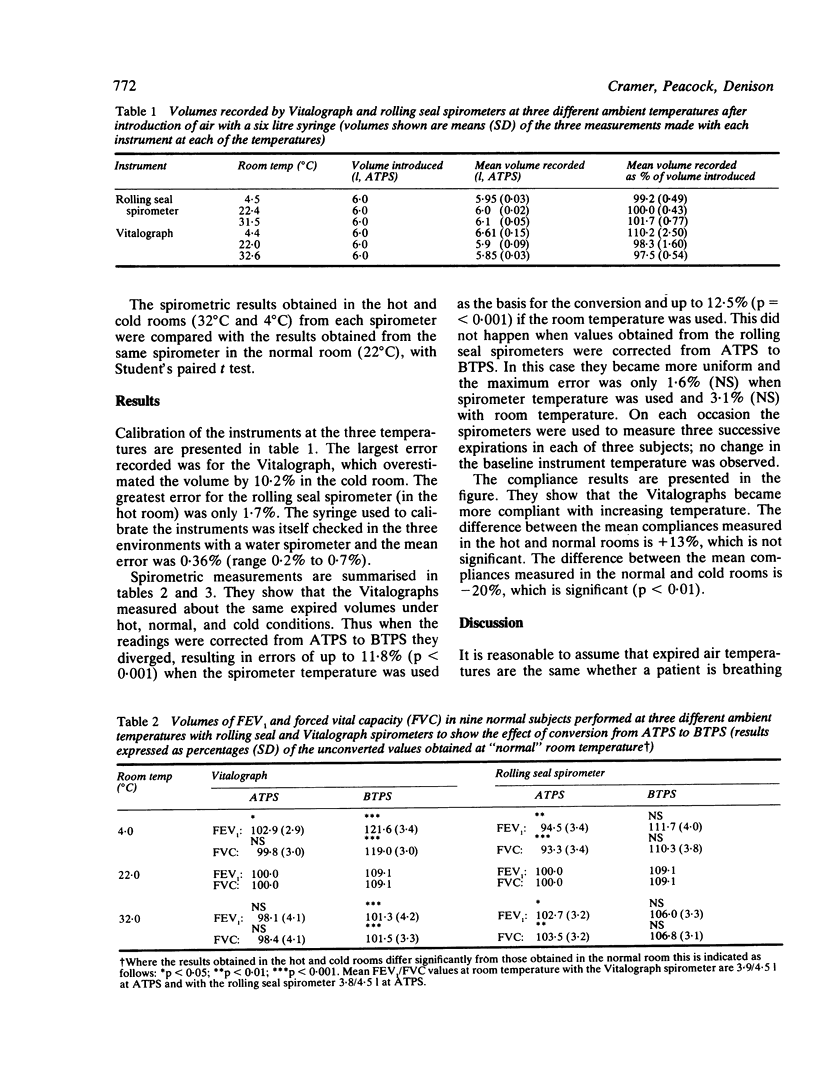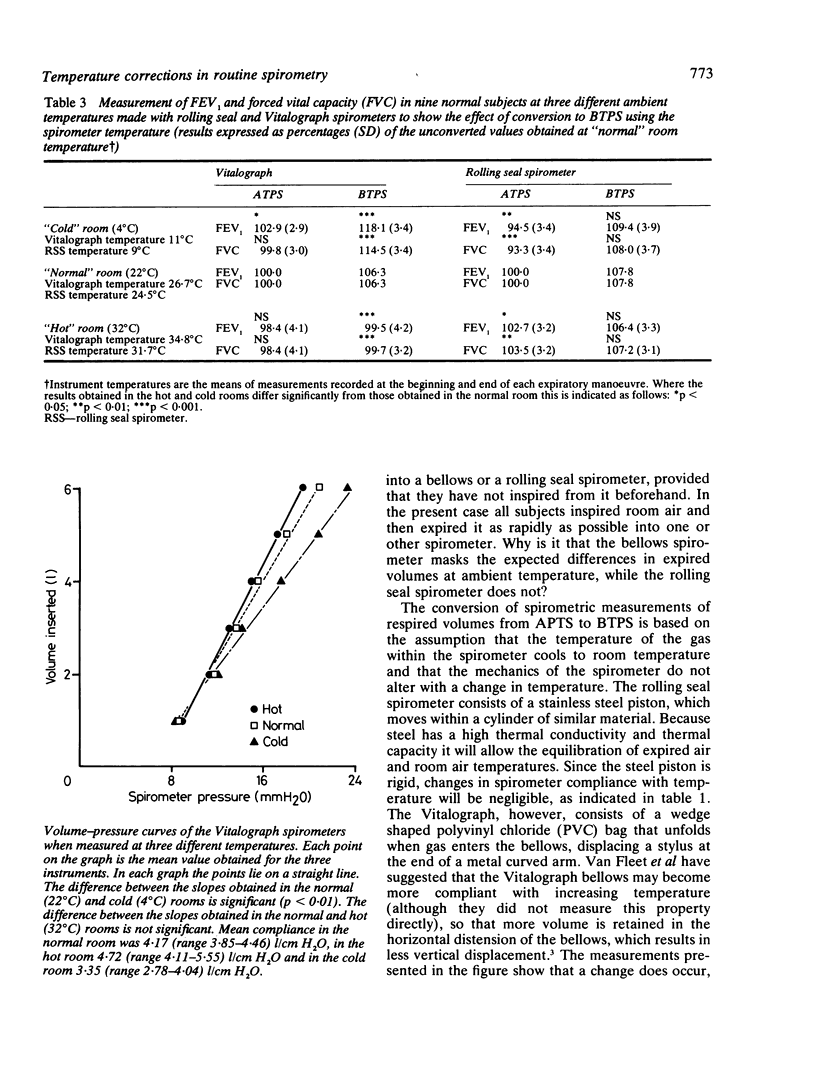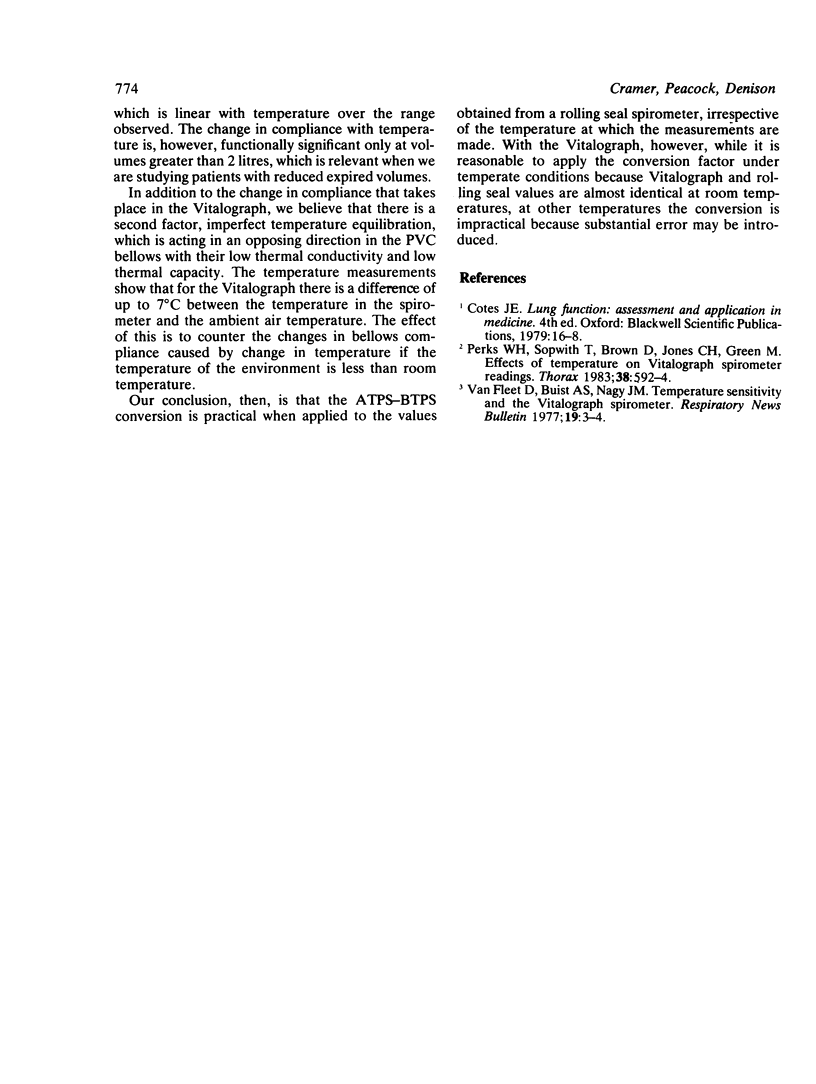Abstract
Forced expiratory volume (FEV1) and forced vital capacity (FVC) were measured in nine normal subjects with three Vitalograph and three rolling seal spirometers at three different ambient temperatures (4 degrees C, 22 degrees C, 32 degrees C). When the results obtained with the rolling seal spirometer were converted to BTPS the agreement between measurements in the three environments improved, but when the Vitalograph measurements obtained in the hot and cold rooms were converted an error of up to 13% was introduced. The error was similar whether ambient or spirometer temperatures were used to make the conversion. In an attempt to explain the behaviour of the Vitalograph spirometers the compliance of their bellows was measured at the three temperatures. It was higher at the higher temperature (32 degrees C) and lower at the lower temperature (4 degrees C) than at the normal room temperature. These changes in instrument compliance could account for the differences in measured values between the two types of spirometer. It is concluded that the ATPS-BTPS conversion is valid and necessary for measurements made with rolling seal spirometers, but can cause substantial error if it is used for Vitalograph measurements made under conditions other than normal room temperature.
Full text
PDF



Selected References
These references are in PubMed. This may not be the complete list of references from this article.
- Perks W. H., Sopwith T., Brown D., Jones C. H., Green M. Effects of temperature on Vitalograph spirometer readings. Thorax. 1983 Aug;38(8):592–594. doi: 10.1136/thx.38.8.592. [DOI] [PMC free article] [PubMed] [Google Scholar]


